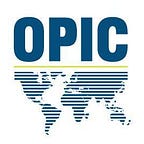Why emerging markets need more private equity
By Brooks Preston
OPIC Vice President, Investment Funds
When Silverlands Funds invested in a cattle ranching business in Zambia, it helped grow the farm’s herd by more than 30 percent in a single year. Alsis Fund’s investments in housing in Mexico supported the creation of multiple low-income housing projects that provided thousands of affordable homes. Sarona Frontier Markets Fund, a “fund of funds,” has supported various portfolio companies across a variety of sectors that have yielded many benefits in the developing world, including helping a school in Egypt create a special program to subsidize tuition for Syrian refugees.
These are just a few of the investments made by some of the emerging market private equity funds the Overseas Private Investment Corporation (OPIC) supports in developing countries around the world. OPIC’s support for emerging market private equity is one investment strategy that helps serve the Agency’s broader mission of mobilizing private capital to address major development challenges.
As the U.S. Government’s development finance institution, OPIC provides loans, political risk insurance, and support for investment funds to support development in more than 100 developing countries around the world. Since 1991, OPIC’s Investment Funds Department has supported a portfolio of $5.6 billion across 82 funds. Over this time, the investment environment in emerging markets has evolved, and OPIC investment funds program has evolved with it.
This week, as the Emerging Market Private Equity Association (EMPEA) gathers in Washington for its annual meeting, there will be considerable discussion about what has changed in the past few years, and what is likely to change in the years to come. Today there are many more experienced private equity managers with track records of successful investment than there were 10 years ago when the sector was still in an early pioneering stage. There is also a much broader selection of strategies, many of which target exactly the development opportunities that OPIC seeks, including financial inclusion, health care, renewable energy, credit, affordable housing, and infrastructure. Another recent change is a more sophisticated set of investors participating in emerging market private equity. These include U.S. foundations, pensions and endowments seeking to achieve financial growth and a positive social impact, as well as local pensions in emerging markets with capital to invest in their own economies, sometimes for the first time.
Even though emerging markets are generating 54 percent of global GDP, they attract less than 20 percent of the global private equity wallet.
All of these changes have expanded the opportunity for investors seeking differentiated and less correlated financial returns and for those focused on achieving social and environmental benefits and other positive development impacts. OPIC seeks out the investment strategies that have the potential to deliver the best of both.
Despite this positive evolution of the structure of the private equity market, the size of the private equity sector in emerging markets remains small. Even though emerging markets are generating 54 percent of global GDP, they are attracting less than 20% of the global private equity wallet. One of OPIC’s objectives to help address this imbalance, particularly in markets vulnerable to conflict, high youth unemployment and under-employment, and environmental and social degradation.
To serve our mission of supporting economic development by catalyzing private capital, OPIC has also evolved to reflect the market today. We have adjusted the terms of our fund commitments to reflect that fact that some investors value OPIC’s strategic participation more than they value the strict financial benefits of leverage. We have also shifted away from a bifurcated origination and monitoring division of labor to full-cycle responsibilities so that the relationship stays one professional that can help our managers maximize the development potential of the strategy. We have stepped up educational materials so that our fund managers have a clearer picture of the twin mandates of being a steward of OPIC capital; financial returns and environmental and social responsibility.
We’ve also developed the Innovative Financial Intermediary Program, or IFIP, to cultivate some of the promising and highly impactful, but unconventional investment vehicles that often target some of the most hard-to-reach sectors. And on the capital markets side, we sell green guaranties to enable investors to invest in several broad categories of “green projects,” including renewable energy, energy efficiency, sustainable waste management and clean water. Innovation is clearly at the heart of growth in fast changing emerging market economies, and it is part of our culture at OPIC too.
Investing inevitably involves risk. We recognize that disappointments are inevitable, but we also know that if we can manage risk well, our successes will outweigh our disappointments. OPIC has a long track record of successfully supporting investment in challenging emerging markets. Indeed, we are a self-sustaining agency that has generated money for 38 years in a row. Investments like the cattle farm in Zambia or the affordable housing in Mexico are a few of the many examples of our successes and the opportunities continue to grow to invest to achieve financial and social returns.
